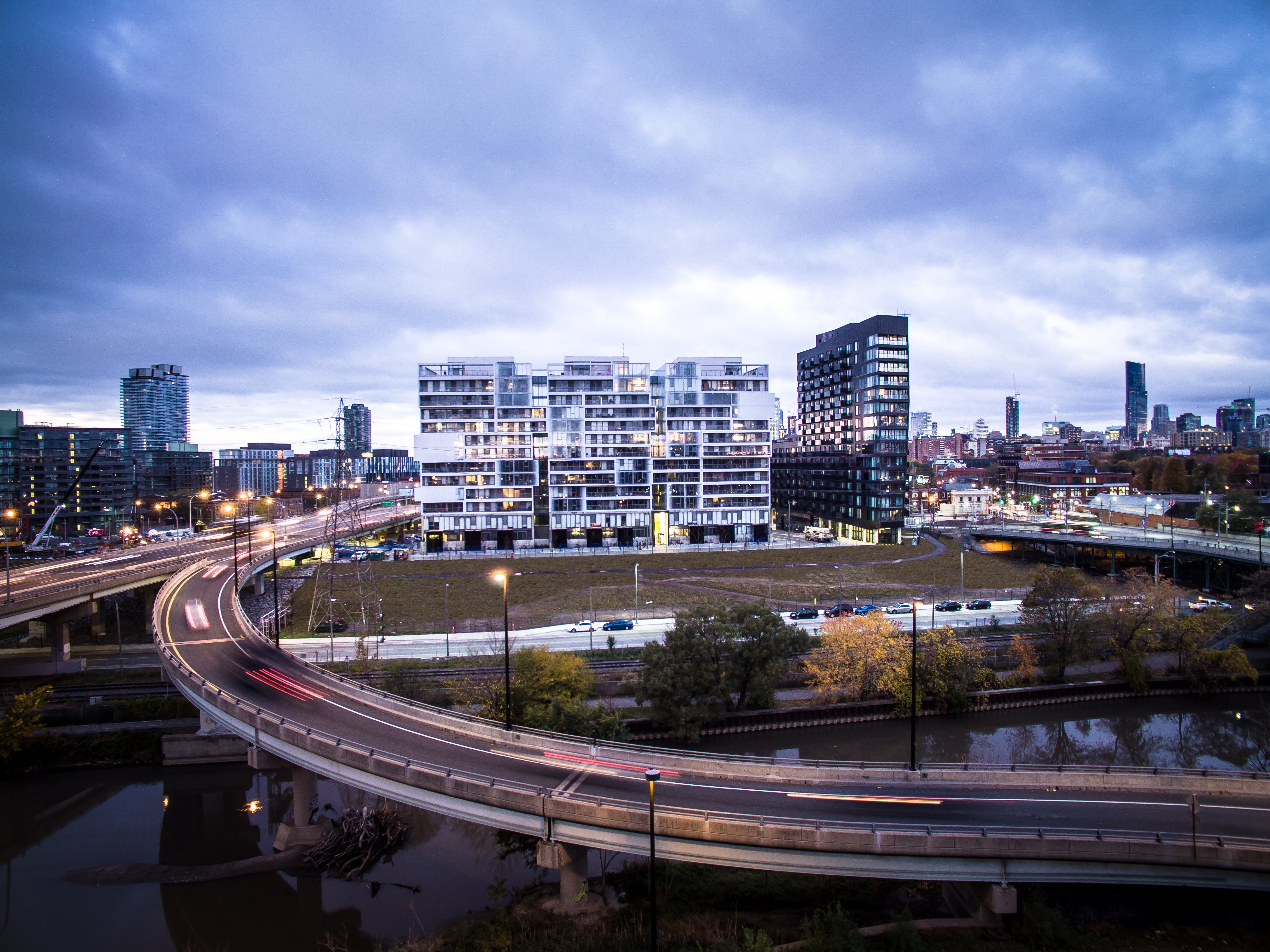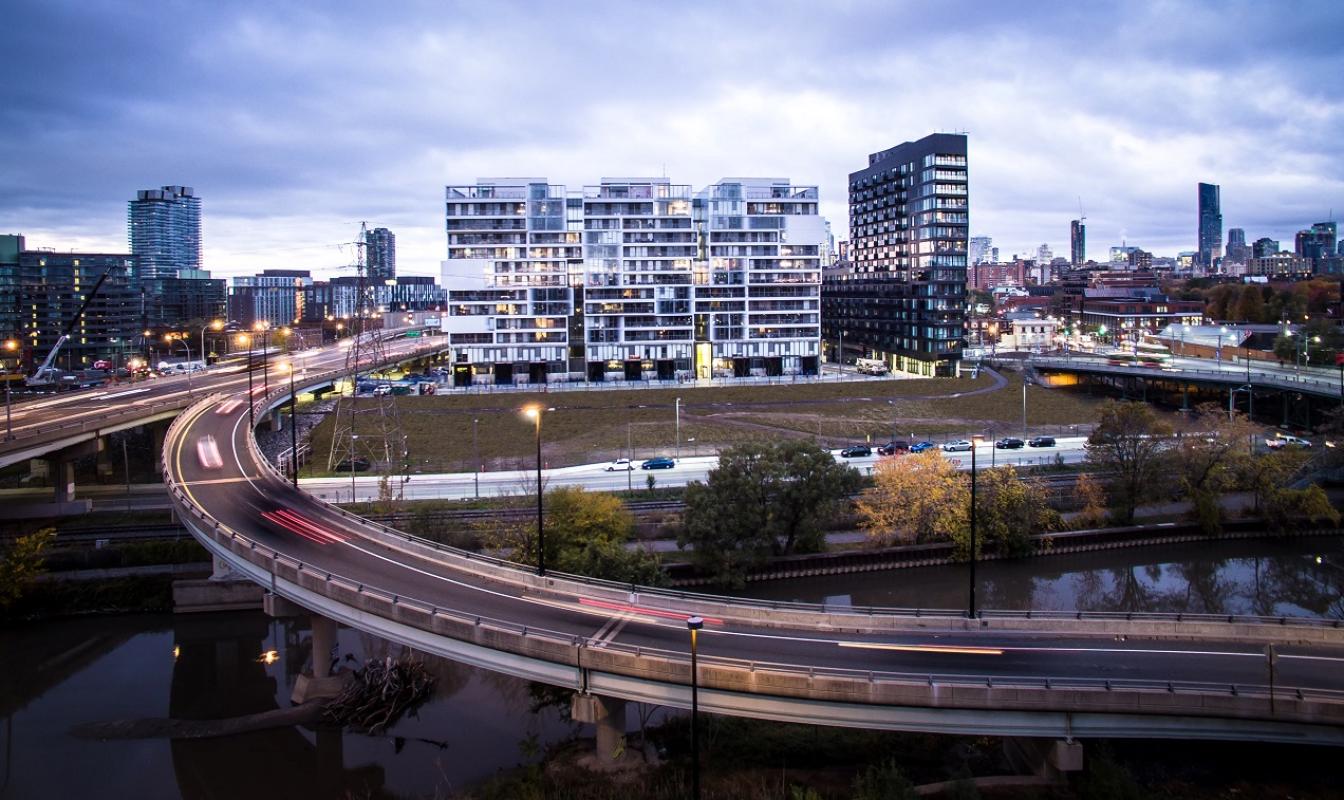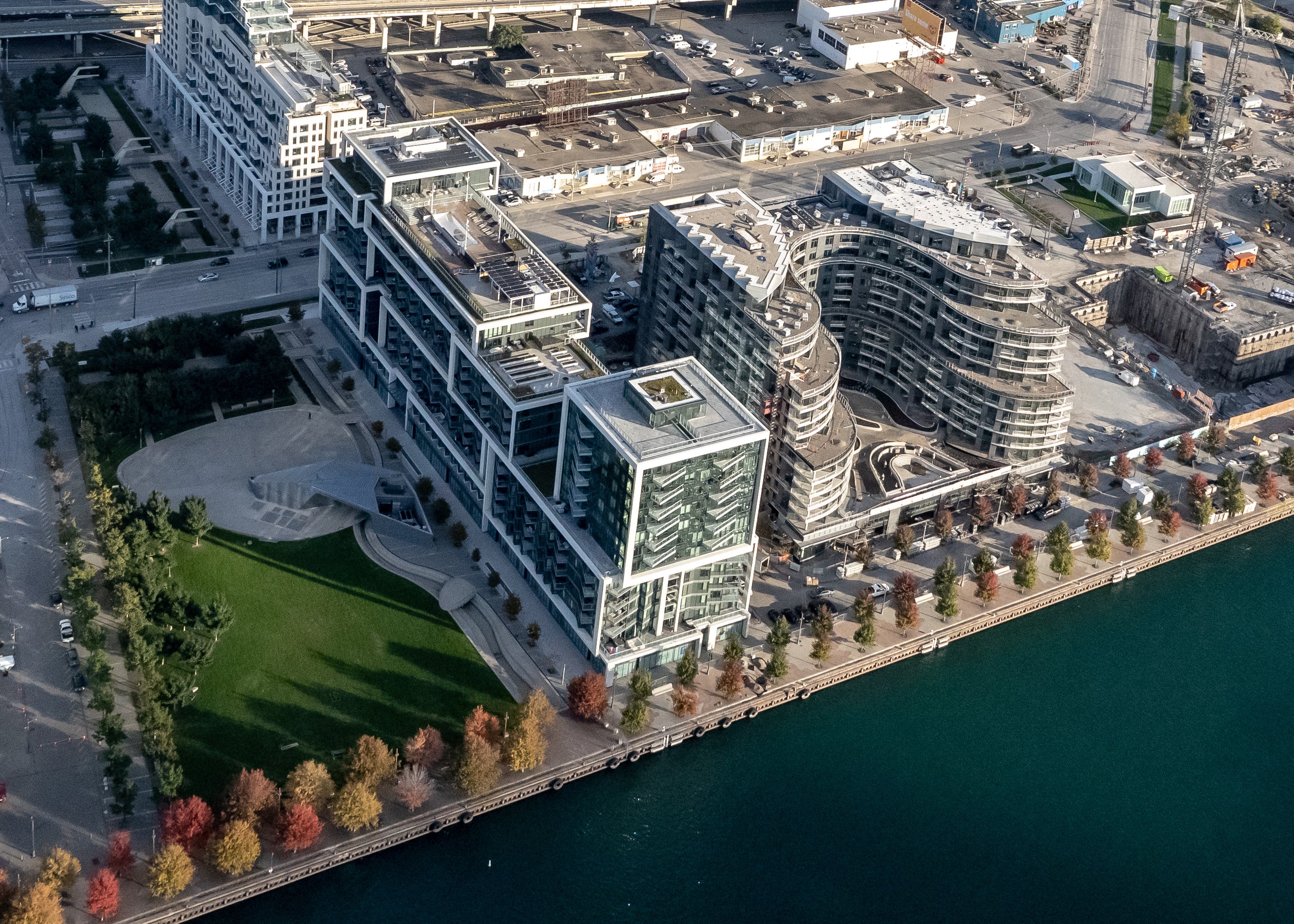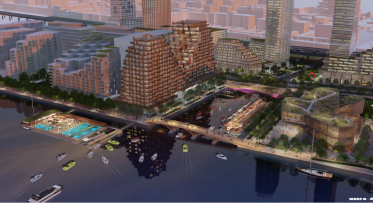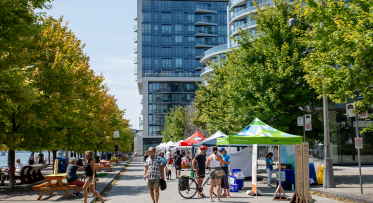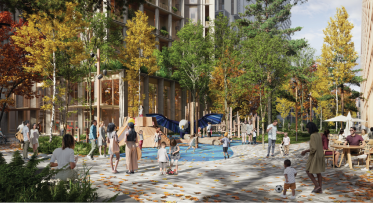CSRSR Profile Series: Green Buildings
River City Phase 1 and 2 in the West Don Lands are just two of 11 LEED Gold Certified buildings completed in waterfront precincts. (Photo credit: Jose Uribe)
POSTED: FEBRUARY 11, 2019 I DESIGN, SUSTAINABILITY, INNOVATION
BY: EMMA LOEWEN
Welcome to the second installment of our 2017 CSRSR profile series. Today, we’ll take a look at Waterfront Toronto’s strong history of pushing the boundaries in green building design by establishing precedent-setting standards for all buildings on government-owned lands in waterfront precincts.
In 2009, we established a comprehensive series of Minimum Green Building Requirements (MGBR) designed to guide the development of high-performance buildings on the waterfront. Some important requirements in the MGBR include that buildings earn LEED Gold certification, install sub-metering to measure the energy use in each suite, and install green roofs, bike parking and electrical vehicle charging stations.
Another important but often under-recognized requirement of the MGBR, is that each project must follow an integrated design process (IDP). This process ensures that green building considerations are developed early on in conjunction with architectural and engineering decisions for each project. IDP can play a substantial role in mitigating the additional costs of designing and constructing a green building.
In fact, utilizing an integrative design process often results in significant savings for a project in many cases. See this case study where collaborating and identifying efficiencies early on in the design process resulted in a reduction in overall project costs by 17 per cent.
As a result of the MGBRs and IDP, 11 LEED Gold certified buildings have been constructed along the waterfront with another 13 buildings registered to achieve LEED Gold or Platinum certification. These green buildings lower the city’s greenhouse gas emissions (GHG) and bring us closer to Toronto’s GHG-reduction targets, while also reducing energy bills for residents.
Aqualina, a residential building located in East Bayfront next to Sherbourne Common, is pursuing LEED Platinum certification and will include a Net-Zero-Dwelling.
Aqualina in our East Bayfront community is a shining example of this work. Our development partner, Tridel, has worked with Tower Labs, a non-profit organization that promotes adopting green technology in high-rise buildings, to make Aqualina a landmark in sustainable residential development. The 13-storey condominium is pursuing LEED Platinum certification and includes a Net-Zero Energy Dwelling. What is Net-Zero? It’s a distinction that buildings or individual units can earn when they generate as much clean energy onsite or nearby as it uses on an annual bases. Want more info? Check out this handy infographic for further details.
Our MGBR’s and collaborative approach to working with developers has earned us many recognitions within the green building community. Most notably – the Globe Award for Environmental Excellence in Urban Sustainability in 2012.
Our next installation of the CSRSR Profile Series will head underwater and explore Waterfront Toronto’s role in supporting Lake Ontario’s aquatic ecosystems.